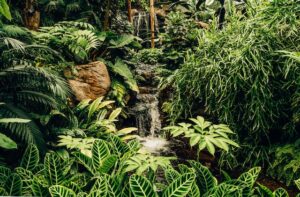Belize, home to world-famous Maya ruins, also boasts other archaeological treasures with equally fascinating histories – one such landmark being Serpon Sugar Mill in Stann Creek District.
After the American Civil War, former Confederates invested heavily in Belize’s sugar industry to spur industrialization in southern Belize and help begin Belize’s Industrial Era.
Tracing Serpon Sugar Mill’s Roots
Serpon Sugar Mill may not be as visually stunning as Belize’s Maya temples, but its significance in marking Belize’s transition from an agricultural nation to one characterized by industry is immense. It stands as proof of how technology-enabled such change during its steam-age heyday.
Yucatan immigrants introduced sugar cane cultivation into Corozal in 1848 and labor-intensive production soon followed. By the time of the American Civil War’s end, however, an increasing number of Americans had begun settling and investing heavily in southern Belize sugar farms.
In the 1860s and 1870s, East Indian indentured laborers provided an essential workforce to aid with planting, harvesting, and processing sugar cane for export from Belize’s sugar industry. Its development played an essential role in both its history and that of the United States in Latin America.
As cane production increased, new processing facilities were established to increase productivity. One such mill was Serpon Sugar Mill; one of two steam-powered mills established at that time. William Bowman purchased and operated it before selling it between 1868-1874 to Young, Toledo & Company.
Visitors to the site today can still see remnants of the sugar cane plant including remnants such as its three-wheel main crusher still sitting on its original foundation; boilers that produced enough steam for powering equipment; Tredegar engines, beam engines, an evaporating furnace, and hot air exchanger.
While NICH and the Institute of Archaeology’s efforts in saving a mill is certainly an accomplishment, restoring it back into operation has presented several obstacles. News Five’s Delahnie Bain reported on their ongoing work on this reserve for over 10 years now.
Even with all its obstacles, work is progressing well. The area around the sugar mill has been cleared out and plans have been laid to transform it into a park to provide visitors with an immersive experience of working in this industrial setting. Plans also call for including a teepee village, museum exhibits, and displays of sugar cane-related artifacts in this park.
Preserving the Serpon Sugar Mill History
Serpon Industrial Complex was constructed near Sittee River village in Stann Creek District and marked the start of Belize’s sugar production era in 1865. One of two steam-powered sugar mills to open in Belize at that time – Regalia Estate being another. Both estates flourished into vibrant communities that offered all amenities necessary for life to run smoothly.
Sugarcane cultivation was first introduced to Maya and Mestizo refugees from Yucatan during the late 18th century, but only after the American Civil War did former plantation owners from the South invest large sums into it. One Scottish man named William Bowman recognized its potential and established a sugar mill at his estate at Serpon.
At its height, the factory produced enormous amounts of sugar. As an engineering marvel, its plantation boasted an array of machinery such as a main crusher, boilers that generated steam to power equipment, beam engines to run all processes involved with sugar production, an evaporating furnace stretching 75 feet long and hot air exchanger – far cry from how Mayas and Mestizos converted cane into sugar prior to American arrival.
Today, some of that history is being preserved at the Serpon Sugar Mill Archaeological Reserve and Museum Park. News Five’s Delahnie Bain was there for its official unveiling.
The park is well maintained with manicured grass and a small hut featuring photos of the sugar mill on its walls. Remaining machinery has become part of nature, slowly becoming part of its surroundings.
Awe reports that development of the park has taken several years, and encountered various hurdles along its journey – particularly financial ones – but is progressing as planned, and the opening of the reserve marks an important milestone for both NICH and the Institute of Archaeology as well as being significant for those associated with Scottish owner of an estate who still has family living in Belize.
Serpon Sugar Mill and Belize’s Sugar Industry
Sugar remains one of Belize’s key economic sectors and accounts for roughly 15% of population support. Serpon Sugar Mill Archaeological Park in Stann Creek district near Sittee River village is its first historical reserve, featuring incongruous remnants from an enormous industrial apparatus once revolutionizing agriculture, which marked the start of Belize’s industrial era. Belmopan’s Southern Highway can easily access this location via an exit 10 miles south of Hummingbird Highway marked as being for Sittee River Village.
Sugarcane cultivation first arrived to Belize through Yucatan immigrants and gained prominence during the late 1860s and 1870s due to an influx of American expatriates following the Civil War. While sugarcane was traditionally processed using animal-powered mills, Serpon Estate Sugar Mill and Regalia Sugar Mill became significant advances by switching over to steam power as an energy source. These revolutionary mills provided continuous operation which far surpassed traditional harvesting methods.
As well as its technological significance, Belize’s sugar industry bears witness to colonialism and slavery. Former Confederate slave owners of American Southern origin who settled into sugar plantation investments brought with them their concept of using African slave labor for harvesting and processing their crops. After the American Civil War ended, planters were faced with choosing either to hire free African workers or indentured foreign workers in order to keep power and control over their former slaves.
No matter its contentious history, visiting the remnants of Serpon Sugar Mill today can provide an in-depth view into this crucial agricultural industry in Belize. Though less picturesque than Maya ruins of Belize, Serpon Sugar Mill still offers an invaluable window into an important chapter in national history – contact Uncharted Jewel Belize today to schedule your tour to this special historical site!
Sustaining Tradition at Serpon Mill
After years of neglect, Serpon Sugar Mill is finally open to the public as an archaeological reserve. According to Delahnie Bain from News Five, the Institute of Archaeology and National Cultural Heritage (NICH) worked tirelessly on its restoration for over 10 years; their achievement is celebrated today as a major accomplishment by both organizations.
But most significantly, the reserve is honoring an iconic landmark from Belize’s industrial past. When construction of this sugar mill began in 1865, it marked the dawn of Belize’s industrial age – its construction being the first steam-powered device of its type that far outshone the traditional method of extracting sugarcane manually.
Serpon Sugar Estate was home to one of the nation’s most powerful cane crushers during its heyday, crushing hundreds of tons a day with its immense machine. Considered an engineering marvel of its time, Serpon was seen as a hub for industry and served as an example to other sugar estates across America.
By the turn of the century, sugar production had moved to Corozal and Orange Walk districts where it proved more profitable; Serpon estate and Regalia mill were eventually abandoned as such practices no longer proved worthwhile.
Now a stunning ruin, the sugar mill still bears remnants of its former glory, including an impressive main crusher from Scotland which once functioned as part of an expansive complex including a boiler, beam engine, and furnace all powered by steam power.
The park features a small information center where visitors can gain more knowledge about this historic site. Open year-round and admission costs $10 BZD per non-resident of Belize.
Serpon Sugar Mill ruins are easily reached from the Southern Highway near mile marker 10 south of its intersection with the Hummingbird Highway, as its exit to Sittee River Village and entry to its historical park is clearly marked on its right-hand side of the road.




